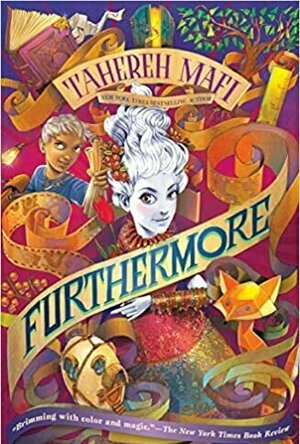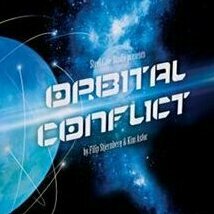Search
Search results

File Browser & Manager Pro for Web and Cloud
Productivity and Utilities
App
With iDownloader PLUS, you can achieve high-speed file downloads from websites direct to your...

Final Draft Writer
Productivity and Business
App
The makers of Final Draft – the #1-selling screenwriting software in the world – now bring you...

Furthermore (Furthermore, #1)
Book
This captivating and colorful adventure that reads like a modern day fairy tale, from the...
Debbiereadsbook (1608 KP) rated Sticky For You (The Rhubarb Effect #1) in Books
Sep 20, 2024
Tim is a live wire and he likes to sing!
Independent reviewer for Archaeolibrarian, I was gifted my copy of this book.
Did you ever read a book, and think "What the ever loving heck did I just read??" (only, you know, more sweary words than some review sites will allow!) Well, this is such a book!
Max moves to Valentine Growville with his odd little pride and immediately feels at home. Meeting Tim, his mate, knocked him for six. I mean, Max is an Alpha lion and Tim is. . .well . .Tim is rhubarb. A rhubarb omega. Can they make this work?
It's so much fun, it really is and I laughed a lot, A LOT reading this book and I rarely react out loud when reading, (listening is a whole 'nother matter, though!)
Max is an Alpha of a pride of lions, bulls, llamas and other things that I forget already but they all have a love of rhubarb. Moving to Growville was a necessity, since they got hounded out their last pride. Tim is.. . . excitable! He really is a bit of a live-wire and he likes to sing. Especially once he realises he is Max' mate and Max can hear him in his head. Singing becomes the easiest way to woo Max and I have to admit, I found myself singing along with those songs that Tim sang, but changed some words for to make it fit better for him and Max.
It's steamy . . but in a kinda weird way. The way rhubarb mate is a little offputting, I will admit, but now I know what to expect, I'll be better prepared.
It is a lot of fun, it really is, right up to the point where things go wrong for Tim, but if he had just talked to Max, it could all have been avoided.
And also the point where the real monsters come to town. But that was not explained, and you have to piece the clues already thrown at you to figure out who they are. I'm fairly certain, but with Sayle at the helm, one can never be too sure!
I loved the references to fingerlings!
I love Sayle, you know I do, and I've read some Brown before, with 4 and 5 star reads from her on my shelves. How they came up with this idea, I have no clue, but it really was a fun read! The setting is set nicely for book two, and I see now whay the whole of Max' pride love rhubarb!
Will it win any literary awards? Nope, but I don't care cos I thoruoghly enjoyed it!
4 very funny stars
*same worded review will appear elsewhere
Did you ever read a book, and think "What the ever loving heck did I just read??" (only, you know, more sweary words than some review sites will allow!) Well, this is such a book!
Max moves to Valentine Growville with his odd little pride and immediately feels at home. Meeting Tim, his mate, knocked him for six. I mean, Max is an Alpha lion and Tim is. . .well . .Tim is rhubarb. A rhubarb omega. Can they make this work?
It's so much fun, it really is and I laughed a lot, A LOT reading this book and I rarely react out loud when reading, (listening is a whole 'nother matter, though!)
Max is an Alpha of a pride of lions, bulls, llamas and other things that I forget already but they all have a love of rhubarb. Moving to Growville was a necessity, since they got hounded out their last pride. Tim is.. . . excitable! He really is a bit of a live-wire and he likes to sing. Especially once he realises he is Max' mate and Max can hear him in his head. Singing becomes the easiest way to woo Max and I have to admit, I found myself singing along with those songs that Tim sang, but changed some words for to make it fit better for him and Max.
It's steamy . . but in a kinda weird way. The way rhubarb mate is a little offputting, I will admit, but now I know what to expect, I'll be better prepared.
It is a lot of fun, it really is, right up to the point where things go wrong for Tim, but if he had just talked to Max, it could all have been avoided.
And also the point where the real monsters come to town. But that was not explained, and you have to piece the clues already thrown at you to figure out who they are. I'm fairly certain, but with Sayle at the helm, one can never be too sure!
I loved the references to fingerlings!
I love Sayle, you know I do, and I've read some Brown before, with 4 and 5 star reads from her on my shelves. How they came up with this idea, I have no clue, but it really was a fun read! The setting is set nicely for book two, and I see now whay the whole of Max' pride love rhubarb!
Will it win any literary awards? Nope, but I don't care cos I thoruoghly enjoyed it!
4 very funny stars
*same worded review will appear elsewhere
Purple Phoenix Games (2266 KP) rated Orbital Conflict in Tabletop Games
Sep 10, 2019
Building your space station. Space combat. Space investors. If these ideas interest you and you are intrigued to know how they work in a board game setting, read on. If you don’t care about head-to-head space stations obliterating each other and jockeying for position as the best bet in the cosmos, discontinue reading.
Orbital Conflict is a player versus player (PvP) card game in which the winner is the player showing the most VPs on their cards at game end. It is a game where placement of cards and orientation of cards is paramount in creating a space station that can dole out damage, take a ton of damage, or hybridizes offense and defense using resources granted from off-station investors.
DISCLAIMER: We were provided a copy of this game for the purposes of this review. These are final components, and the game is available from the publisher and other online retail stores. Also, I do not intend to explicitly cover every rule for the game, but to give an idea of game flow and play. -T
To setup the game (in this case a 1v1 head-to-head bout) shuffle all the cards with the white back together and deal each player a hand of five. Shuffle the smaller investor cards to form a draw pile. Give the starting player the Initiative card and you are ready to start!
The game follows a simple game flow following three phases per round: Draw, Main, Combat. During the Draw phase, the player with the Initiative card (I’ll call them the active player) will draw two cards from the white-backed deck (which I will just call cards). Then the other player will draw two cards as well. The active player then draws two investor cards for themselves and places them in front of their play area as possible investors to claim. The other player does the same. If there are any cards containing discard abilities that a player would like to play during the Draw phase, and the discard text reads they may do so during the Draw phase or any phase, they may play them and follow the discard instructions now.
Once done, the game moves on to the Main phase. During this phase the active player will play any cards they wish that are appropriate for this phase, and then the other player will do the same. During this phase players will be playing cards from hand (and as many as they would like) to add on to their space station, activate modules that were previously deactivated, claim investor cards, and prepare for the next game phase. Space stations can be added to via modules. Modules can be single cards, or multiple splayed cards. As you can see in the photo above cards have icons to the left of the white barrier and some will also have icons to the right. Depending on how a card is added to a module certain icons may be covered and therefore inactive. When adding a card to a module (called an extension) the player decides if they want to add the card to the right of the splay, thus covering up icons to the right of the barrier of the covered card, or under the stack to the left of the splay. Additionally, players may flip any card over to have the back showing, which will provide icons usable in a station module. There are restrictions for playing cards, but I will let you discover those on your own.
The game follows a simple game flow following three phases per round: Draw, Main, Combat. During the Draw phase, the player with the Initiative card (I’ll call them the active player) will draw two cards from the white-backed deck (which I will just call cards). Then the other player will draw two cards as well. The active player then draws two investor cards for themselves and places them in front of their play area as possible investors to claim. The other player does the same. If there are any cards containing discard abilities that a player would like to play during the Draw phase, and the discard text reads they may do so during the Draw phase or any phase, they may play them and follow the discard instructions now.
Once done, the game moves on to the Main phase. During this phase the active player will play any cards they wish that are appropriate for this phase, and then the other player will do the same. During this phase players will be playing cards from hand (and as many as they would like) to add on to their space station, activate modules that were previously deactivated, claim investor cards, and prepare for the next game phase. Space stations can be added to via modules. Modules can be single cards, or multiple splayed cards. As you can see in the photo above cards have icons to the left of the white barrier and some will also have icons to the right. Depending on how a card is added to a module certain icons may be covered and therefore inactive. When adding a card to a module (called an extension) the player decides if they want to add the card to the right of the splay, thus covering up icons to the right of the barrier of the covered card, or under the stack to the left of the splay. Additionally, players may flip any card over to have the back showing, which will provide icons usable in a station module. There are restrictions for playing cards, but I will let you discover those on your own.
Orbital Conflict is a player versus player (PvP) card game in which the winner is the player showing the most VPs on their cards at game end. It is a game where placement of cards and orientation of cards is paramount in creating a space station that can dole out damage, take a ton of damage, or hybridizes offense and defense using resources granted from off-station investors.
DISCLAIMER: We were provided a copy of this game for the purposes of this review. These are final components, and the game is available from the publisher and other online retail stores. Also, I do not intend to explicitly cover every rule for the game, but to give an idea of game flow and play. -T
To setup the game (in this case a 1v1 head-to-head bout) shuffle all the cards with the white back together and deal each player a hand of five. Shuffle the smaller investor cards to form a draw pile. Give the starting player the Initiative card and you are ready to start!
The game follows a simple game flow following three phases per round: Draw, Main, Combat. During the Draw phase, the player with the Initiative card (I’ll call them the active player) will draw two cards from the white-backed deck (which I will just call cards). Then the other player will draw two cards as well. The active player then draws two investor cards for themselves and places them in front of their play area as possible investors to claim. The other player does the same. If there are any cards containing discard abilities that a player would like to play during the Draw phase, and the discard text reads they may do so during the Draw phase or any phase, they may play them and follow the discard instructions now.
Once done, the game moves on to the Main phase. During this phase the active player will play any cards they wish that are appropriate for this phase, and then the other player will do the same. During this phase players will be playing cards from hand (and as many as they would like) to add on to their space station, activate modules that were previously deactivated, claim investor cards, and prepare for the next game phase. Space stations can be added to via modules. Modules can be single cards, or multiple splayed cards. As you can see in the photo above cards have icons to the left of the white barrier and some will also have icons to the right. Depending on how a card is added to a module certain icons may be covered and therefore inactive. When adding a card to a module (called an extension) the player decides if they want to add the card to the right of the splay, thus covering up icons to the right of the barrier of the covered card, or under the stack to the left of the splay. Additionally, players may flip any card over to have the back showing, which will provide icons usable in a station module. There are restrictions for playing cards, but I will let you discover those on your own.
The game follows a simple game flow following three phases per round: Draw, Main, Combat. During the Draw phase, the player with the Initiative card (I’ll call them the active player) will draw two cards from the white-backed deck (which I will just call cards). Then the other player will draw two cards as well. The active player then draws two investor cards for themselves and places them in front of their play area as possible investors to claim. The other player does the same. If there are any cards containing discard abilities that a player would like to play during the Draw phase, and the discard text reads they may do so during the Draw phase or any phase, they may play them and follow the discard instructions now.
Once done, the game moves on to the Main phase. During this phase the active player will play any cards they wish that are appropriate for this phase, and then the other player will do the same. During this phase players will be playing cards from hand (and as many as they would like) to add on to their space station, activate modules that were previously deactivated, claim investor cards, and prepare for the next game phase. Space stations can be added to via modules. Modules can be single cards, or multiple splayed cards. As you can see in the photo above cards have icons to the left of the white barrier and some will also have icons to the right. Depending on how a card is added to a module certain icons may be covered and therefore inactive. When adding a card to a module (called an extension) the player decides if they want to add the card to the right of the splay, thus covering up icons to the right of the barrier of the covered card, or under the stack to the left of the splay. Additionally, players may flip any card over to have the back showing, which will provide icons usable in a station module. There are restrictions for playing cards, but I will let you discover those on your own.
Acanthea Grimscythe (300 KP) rated The Coldest Girl in Coldtown in Books
May 16, 2018
Actual rating: 3.5. Rounded to 4.
I don’t really tend to read a lot of vampire books anymore, especially when they’ve been labeled young adult. Holly Black’s The Coldest Girl in Coldtown is definitely an exception to that habit. I needed a break from flipping pages and wanted to get in a little bit of time gaming. When I saw The Coldest Girl in Coldtown available for an immediate audio book borrow from OverDrive, I decided to give it a shot. I’d heard of Holly Black, even if I hadn’t read any of her work.
Black’s novel takes vampirism and spreads it in the same manner that most post-apocalyptic novels spread the infectious diseases that create zombies. Vampires are romanticized, as they often are, especially in young adult books, and in this case, they no longer live in the shadows; rather, they have taken up residence in government organized areas known as Coldtowns. Those that have been infected with the vampire virus are also holed up within the walls of this cities, and there’s no shortage of food, because people are dying to get in.
Waking up after passing out at a party, the main character, a young woman named Tana, finds herself amidst a massacre: people she knows have been slaughtered by vampires. The only survivors are her, an ex-boyfriend, and a strange boy. Her ex is infected, and the boy is a vampire. Deciding to turn him in for a bounty, and worried that her ex will become a vampire himself, the trio travel to Coldtown. It isn’t long before Tana finds herself caught up in what could loosely be described as vampire politics. Amongst betrayal, she must persevere in order to guarantee her own survival.
The majority of the story is told from Tana’s perspective, with a few chapters written in Gavriel, the vampire’s, and another one, maybe two, from her younger sister’s, Pearl’s, point-of-view. These changes exist solely to expound on certain events that have led the characters to where they are, such as Gavriel’s past — which is, undoubtedly, one of my favorite parts of the book. Each chapter also begins with an excerpt, usually from a poem that deals with death, the undead, or vampires.
Voices make a huge impact on listening to audio books, especially for me. If I can’t stand the voice, I will not finish the book more than likely. In the case of The Coldest Girl in Coldtown, the narrator, Christine Lakin, is absolutely amazing. Her voice is pleasant to listen to, and there is a clear difference between the way each of the characters speak.
The Coldest Girl in Coldtown isn’t among my favorite reads, perhaps because I prefer the more traditional approaches to vampires, but it is, undoubtedly, an fun journey. If you like your vampires a bit on the softer side of the spectrum, this one is definitely worth picking up.
I don’t really tend to read a lot of vampire books anymore, especially when they’ve been labeled young adult. Holly Black’s The Coldest Girl in Coldtown is definitely an exception to that habit. I needed a break from flipping pages and wanted to get in a little bit of time gaming. When I saw The Coldest Girl in Coldtown available for an immediate audio book borrow from OverDrive, I decided to give it a shot. I’d heard of Holly Black, even if I hadn’t read any of her work.
Black’s novel takes vampirism and spreads it in the same manner that most post-apocalyptic novels spread the infectious diseases that create zombies. Vampires are romanticized, as they often are, especially in young adult books, and in this case, they no longer live in the shadows; rather, they have taken up residence in government organized areas known as Coldtowns. Those that have been infected with the vampire virus are also holed up within the walls of this cities, and there’s no shortage of food, because people are dying to get in.
Waking up after passing out at a party, the main character, a young woman named Tana, finds herself amidst a massacre: people she knows have been slaughtered by vampires. The only survivors are her, an ex-boyfriend, and a strange boy. Her ex is infected, and the boy is a vampire. Deciding to turn him in for a bounty, and worried that her ex will become a vampire himself, the trio travel to Coldtown. It isn’t long before Tana finds herself caught up in what could loosely be described as vampire politics. Amongst betrayal, she must persevere in order to guarantee her own survival.
The majority of the story is told from Tana’s perspective, with a few chapters written in Gavriel, the vampire’s, and another one, maybe two, from her younger sister’s, Pearl’s, point-of-view. These changes exist solely to expound on certain events that have led the characters to where they are, such as Gavriel’s past — which is, undoubtedly, one of my favorite parts of the book. Each chapter also begins with an excerpt, usually from a poem that deals with death, the undead, or vampires.
Voices make a huge impact on listening to audio books, especially for me. If I can’t stand the voice, I will not finish the book more than likely. In the case of The Coldest Girl in Coldtown, the narrator, Christine Lakin, is absolutely amazing. Her voice is pleasant to listen to, and there is a clear difference between the way each of the characters speak.
The Coldest Girl in Coldtown isn’t among my favorite reads, perhaps because I prefer the more traditional approaches to vampires, but it is, undoubtedly, an fun journey. If you like your vampires a bit on the softer side of the spectrum, this one is definitely worth picking up.
Rachel King (13 KP) rated The Lost Angel in Books
Feb 11, 2019
This book had almost too much going on, with an extensive glossary in the beginning pages - complete with color photos - that I needed to read beforehand to keep up with the plot. Javier Sierra made a point of mixing fact with fiction in this novel, and the book reads like an extensive 'conspiracy theory.' My husband is much more familiar with many aspects of the plot, and I often asked him if what I was reading about was really true or not. The book opens with a quotation of Genesis 6: 2-3, which states "...the sons of God saw that the daughters of man were beautiful; and they took wives for themselves of all whom they chose. And the Lord said, 'My Spirit shall not strive with man forever, for he is indeed flesh; yet his days shall be one hundred and twenty years.'" This is followed by a quote from John Dee, who figures prominently in the plot, though I did not find the quote to be especially inspiring.
The main focus of the book is about a group of people who consider themselves descendants of those angels that joined with "the daughters of man," and want to find a way to get back into heaven. They will use any means necessary to accomplish this -- murder, deceit, even putting the whole planet in jeopardy.
The main character, Julia Alvarez, is a psychic who is completely duped by their antics. I understand that the author means for the reader to feel sympathy for the angelic descendants through Julia's narration, but the way that Julia allows herself to be used and deceived by even her own husband disgusts me. She believes whatever they tell her and does not question anything. In fact, anyone that does question this main family is characterized as foolish and forgettable, such as Ellen Watson and Inspector Figueiras.
There was one main problem I had with the plot, which is that in the Bible, the angels that mate with human women are 'fallen' because they disobeyed God, which is never addressed. What is also never addressed is any scriptural substantiation for what they believed about Noah and the ark. They believed they could force God to take them back into heaven with their thrown-together mish-mash of technology. How is that believable? God kicked the angels out - they certainly can't force their way back in! Not to mention, this family does not back up their belief that they are descendants of angels with actual scientific proof, such as DNA tests, even though they all claim to be men (and woman) of science.
Overall, the book twists a blasphemous tale of Biblical scripture, using factual information to support a fictitious plot. It has suspense, intrigue, and even a bit of romance, but the end is neither believable nor enjoyable. While books of this nature became popular thanks to the works of Dan Brown, (yes, I've read his stuff, too), I found this book to be merely an okay read.
The main focus of the book is about a group of people who consider themselves descendants of those angels that joined with "the daughters of man," and want to find a way to get back into heaven. They will use any means necessary to accomplish this -- murder, deceit, even putting the whole planet in jeopardy.
The main character, Julia Alvarez, is a psychic who is completely duped by their antics. I understand that the author means for the reader to feel sympathy for the angelic descendants through Julia's narration, but the way that Julia allows herself to be used and deceived by even her own husband disgusts me. She believes whatever they tell her and does not question anything. In fact, anyone that does question this main family is characterized as foolish and forgettable, such as Ellen Watson and Inspector Figueiras.
There was one main problem I had with the plot, which is that in the Bible, the angels that mate with human women are 'fallen' because they disobeyed God, which is never addressed. What is also never addressed is any scriptural substantiation for what they believed about Noah and the ark. They believed they could force God to take them back into heaven with their thrown-together mish-mash of technology. How is that believable? God kicked the angels out - they certainly can't force their way back in! Not to mention, this family does not back up their belief that they are descendants of angels with actual scientific proof, such as DNA tests, even though they all claim to be men (and woman) of science.
Overall, the book twists a blasphemous tale of Biblical scripture, using factual information to support a fictitious plot. It has suspense, intrigue, and even a bit of romance, but the end is neither believable nor enjoyable. While books of this nature became popular thanks to the works of Dan Brown, (yes, I've read his stuff, too), I found this book to be merely an okay read.
Pirates and Swearing
I received this book for free through Goodreads First Reads.
Citadel is a personal account of one man’s war against the pirates of Somalia. Jordan Wylie grew up in Blackpool and joined the King’s Royal Hussars as soon as he left school. Unfortunately, a back injury restricted the tasks he was able to perform meaning he had to leave the army behind him. However, his skills as a non-commissioned officer came in handy in his new position in maritime security. Jordan became a security guard for merchant ships that had to make the dangerous journey through Pirate Alley, i.e. Somalia. In this book, Jordan tries to encapsulate his experience aboard these ships and his encounter with the licentious pirates.
Somali pirates are not the typical figures from pantomimes, dressed in tricorn hats and frock coats, complete with pet parrot on the shoulder yelling “Avast me hearties!” Instead, they are young African men of a bellicose nature, some barely out of their teens, wielding guns with the intention of taking over ships and demanding extortionate ransoms.
Jordan was rather fortunate with his brush with pirates and never experienced being captured or attacked. Nevertheless, the occasions when Somalis attempted to take over were extremely nerve-racking, especially because Jordan and the crew had horror stories of other ships’ fates fresh in their minds. In these instances, Jordan had to remain calm and professional, relying on his army background and personal bravery to keep everyone safe.
The title, Citadel, refers to the name of the safe room the crew were required to lock themselves in should pirate attack become imminent. In some instances, entire ship crews would be locked in these rooms for days or longer, desperately awaiting rescue. Jordan’s brief exposure to the citadel was enough for him to realise how truly awful being locked below decks for a lengthy period of time would be.
Citadel lacks synchronicity and often jumps from Jordan’s own experiences to stories he has heard of other ships. He also talks about his family back home in England, including his wife and young daughter. Being away from home for months at a time is very difficult but the pay cheque of a maritime security guard is too appealing to turn down.
Unfortunately, Jordan’s narrative is ruined through his use of unnecessary expletives. Ironically, Jordan writes about telling off other security guards for swearing because it upsets the native sailors, yet, he does not think about the readers he may be irritating.
Overall, Jordan’s book Citadel brings to attention the dangers sailors face whilst shipping our everyday commodities. Most of us are unaware of the events occurring in the Middle East and the state of the lives of Somali families that force children to grow up to become pirates. Citadel is eye-opening in more ways than one and will interest readers with interest in the armed forces, security management and so forth.
Citadel is a personal account of one man’s war against the pirates of Somalia. Jordan Wylie grew up in Blackpool and joined the King’s Royal Hussars as soon as he left school. Unfortunately, a back injury restricted the tasks he was able to perform meaning he had to leave the army behind him. However, his skills as a non-commissioned officer came in handy in his new position in maritime security. Jordan became a security guard for merchant ships that had to make the dangerous journey through Pirate Alley, i.e. Somalia. In this book, Jordan tries to encapsulate his experience aboard these ships and his encounter with the licentious pirates.
Somali pirates are not the typical figures from pantomimes, dressed in tricorn hats and frock coats, complete with pet parrot on the shoulder yelling “Avast me hearties!” Instead, they are young African men of a bellicose nature, some barely out of their teens, wielding guns with the intention of taking over ships and demanding extortionate ransoms.
Jordan was rather fortunate with his brush with pirates and never experienced being captured or attacked. Nevertheless, the occasions when Somalis attempted to take over were extremely nerve-racking, especially because Jordan and the crew had horror stories of other ships’ fates fresh in their minds. In these instances, Jordan had to remain calm and professional, relying on his army background and personal bravery to keep everyone safe.
The title, Citadel, refers to the name of the safe room the crew were required to lock themselves in should pirate attack become imminent. In some instances, entire ship crews would be locked in these rooms for days or longer, desperately awaiting rescue. Jordan’s brief exposure to the citadel was enough for him to realise how truly awful being locked below decks for a lengthy period of time would be.
Citadel lacks synchronicity and often jumps from Jordan’s own experiences to stories he has heard of other ships. He also talks about his family back home in England, including his wife and young daughter. Being away from home for months at a time is very difficult but the pay cheque of a maritime security guard is too appealing to turn down.
Unfortunately, Jordan’s narrative is ruined through his use of unnecessary expletives. Ironically, Jordan writes about telling off other security guards for swearing because it upsets the native sailors, yet, he does not think about the readers he may be irritating.
Overall, Jordan’s book Citadel brings to attention the dangers sailors face whilst shipping our everyday commodities. Most of us are unaware of the events occurring in the Middle East and the state of the lives of Somali families that force children to grow up to become pirates. Citadel is eye-opening in more ways than one and will interest readers with interest in the armed forces, security management and so forth.





